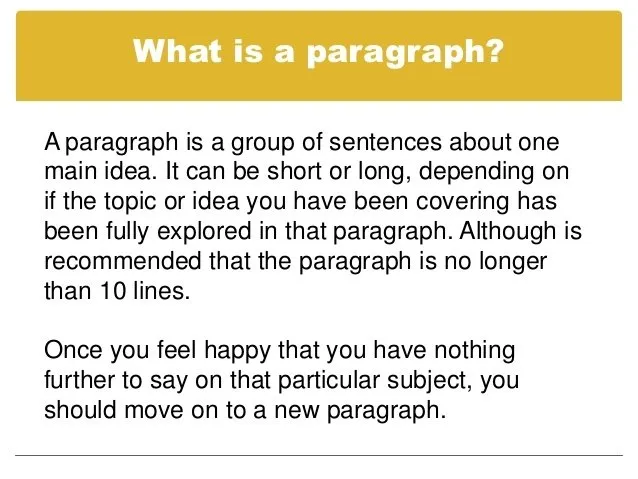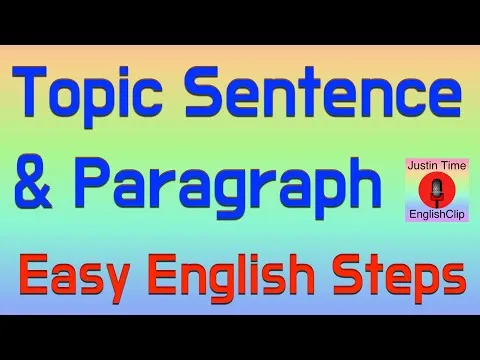At one or other stage you will have to write an essay or story as a task in school.
You try your best and when you get back your assignment, your teacher has written in big red letters "Good story, but please write it in separate paragraphs."

Maybe you do not know how to divide your story into paragraphs, so lets have a look at this.
paragraph'par?gr??f/noun - plural noun: paragraphs
a distinct section of a piece of writing, usually dealing with a single theme and indicated by a new line, indentation, or numbering.
The main reason why we use paragraphs in a written piece is to either show that a new idea or new part of the story is starting or to show when different people are speaking or having different thoughts. This makes it easier and clearer to read and limits the confusion of reading a whole piece written as one.
Your paragraph will have a specific structure
You will start off by writing your 'topic sentence'. This will usually be in the beginning of the paragraph and will tell the reader what the paragraph is about.
For example - If you have to write a story about your dog, you will write about different things, like what he looks like, where you got him, what does he eat, how do you care for him and why he is important to you. Each of these ideas will be a paragraph and each of them you will start off with the main sentence like for instance
My dog is a beautiful dog. He is brown but has black feet and.... etc. The next idea will then be in a new paragraph.
So after you have written the 'main sentence' you will add a few more sentences giving extra information on it.
At the end of the paragraph you will either finish the specific topic, or a sentence that will be the introduction to the next paragraph. Like for instance.
I have to groom my dog every day and must also watch what he eats.
The feeding process of my dog is important. We buy him special food ......
Do you get the idea?
If you are still not sure, watch the video.
Remember the following
- The 'topic sentence' for each paragraph is very important. This is not only the sentence that will tell the reader what the paragraph is about, but it must also keep their interest that they want to read further.
- The 'middle sentences' of the paragraph must not only differ in length so that the reader do not get bored or confused, but it must also add enough information on the statement you made in the beginning.
- End off the paragraph in such a way that it will either motivate the reader to find out more or gives a conclusion of the paragraph so that enough information is gathered.
There are no specific lengths to a paragraph - if your idea is finished then you start with the next one and you can even have a paragraph that is just one line, to let your paragraphs run into one another like for instance
So lets come to a conclusion.
And then you finish off with your final paragraph were you give a conclusion or summary of what you have discussed.
If you want to use the 'one line paragraph' you can use it in the following instances
- you want to make the reader read slower and think about what will happen next
- if you want to add a surprise element to your story
- if you want to repeat something or remind the reader of something that was mentioned before and want to make sure they remember it
You cannot make every paragraph just one line long, because then you loose the effect of it.
So get writing. Organize your thoughts and decide which information or thoughts or topics or ideas go together and arrange them in one paragraph. Also make sure that your reader knows exactly what is going on and do not loose interest.
Putting your written work in paragraphs will help with this.



